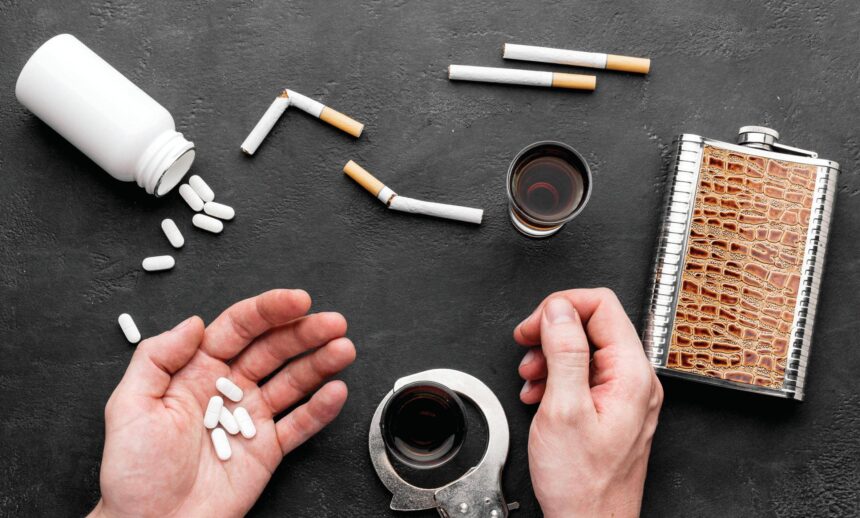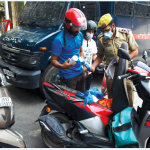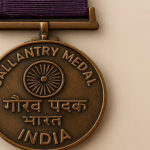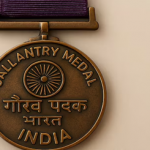In a positive shift in Kashmir’s ongoing battle against drug abuse, the addiction rate has seen a steady decline, thanks to increased awareness and efforts to curb substance abuse. Latest data from the Government Medical College (GMC) shows that the Kashmir division recorded 13,700 substance users from September 2022 to August 2024. This marks a significant drop from 67,468 users in 2022, as reported in a study by the Institute of Mental Health and Neurosciences (IMHANS-K).
However, despite this decline, heroin continues to be the most commonly abused substance in the region, although its use has decreased.
Dr. Mohammad Muzaffar Khan, Director of the Youth Development and Rehabilitation Centre, shared that in 2015-2016, cannabis and medicinal opioids like codeine phosphate were the primary substances abused. But since 2016, heroin use has risen significantly, becoming the most abused drug.
The pattern of drug abuse has also evolved. Traditionally, users would start with cannabis, move on to medicinal opioids, and then use heroin. Today, many users are skipping these early stages and going straight to heroin. This trend is concerning due to heroin’s high addictive potential and severe withdrawal symptoms.
The financial burden of heroin addiction is also alarming. With heroin priced between Rs 4,000 and Rs 6,000 per gram, daily consumption can cost Rs 8,000, or up to Rs 2-2.5 lakh a month. This steep expense often drives users to commit petty crimes to fund their habits.
“I started with painkillers, but soon heroin was the only thing that gave me relief. Now, I’m trapped in this cycle,” said a recovering patient.
The physical toll of heroin addiction is severe, with many users injecting the drug. This has led to a rise in Hepatitis C infections, as shared syringes are commonly used.
Dr. Muzaffar noted that eight out of ten users test positive for Hepatitis C, with an increase in Hepatitis B cases as well, raising concerns about the spread of blood-borne diseases like HIV.
Another patient shared, “I never thought I would end up like this. Heroin consumed my life. At first, it was just an escape from the pain, but now it’s like I’m a slave to it.”
Despite efforts by local authorities to reduce the availability of heroin, dealers have begun adulterating the drug with amphetamines, such as methamphetamine, also known as “ice” or “crystal meth.” This has complicated the treatment process, as users often believe they are consuming heroin. “They test positive for meth, making it harder to manage emergencies,” Dr. Muzaffar explained.
The rise of synthetic drugs like fentanyl, which is ten times more potent than heroin, is another growing concern. Although fentanyl has been a significant issue in the United States, it is now beginning to appear in Kashmir’s drug market.
Dr. Muzaffar warned that if users start switching from heroin to synthetic drugs like fentanyl, it could drastically change the region’s addiction crisis and healthcare system.
The reasons for growing drug abuse in Kashmir are complex, influenced by personal vulnerabilities such as depression and societal pressures, as well as the region’s socio-political instability. Years of conflict and uncertainty have left many young people feeling disconnected, with drugs offering a temporary escape from harsh realities.
“Many young people turn to drugs thinking it will help them feel more confident or improve their appearance,” said Dr. Muzaffar. “We need to focus on increasing awareness in schools and colleges, where youth are most vulnerable.”
Another concerning trend is the rise in female drug users in Kashmir. While addiction has traditionally been more prevalent among men, recent years have seen more women seeking treatment.
“This shift highlights the need for gender-friendly rehabilitation centres that can accommodate the unique needs of women struggling with addiction,” Dr. Muzaffar said. “There is also a critical need for more counsellors and treatment facilities, especially in rural areas where access to help is limited.”
On November 1, 2024, Chief Minister Omar Abdullah addressed the issue of drug abuse, calling it a key priority for his government. Speaking at a civil society meeting at the Sher-e-Kashmir International Convention Centre (SKICC), he acknowledged the decline in the number of drug users, as per GMC data, but emphasized the continued severity of the issue.
“When I was the CM, I addressed the drug issue back in 2012. At that time, it wasn’t as widespread—it was mainly limited to codeine and other pills. Today, however, the problem has escalated. Drugs are destroying the lives of our younger generation,” Abdullah said.
He also urged the collaboration of religious leaders and civil society members in combating the drug epidemic and stressed the need for more Drug De-Addiction Centres across the region.
On November 5, 2024, Lieutenant Governor Manoj Sinha during the Raabta-e-Awaam programme, organised by the Save Youth Save Future Foundation, said a drug-free J&K was essential for helping young people realise their potential and, through hard work, build a brighter future.
Despite the stigma surrounding addiction, there has been progress in the region. Dr. Muzaffar recalled that in 2008, addiction was a taboo subject, and many families were in denial.
“Back then, people didn’t want to admit that addiction was a serious issue in the community,” he said. “But now, more people are coming forward for treatment, showing that attitudes are changing.”










